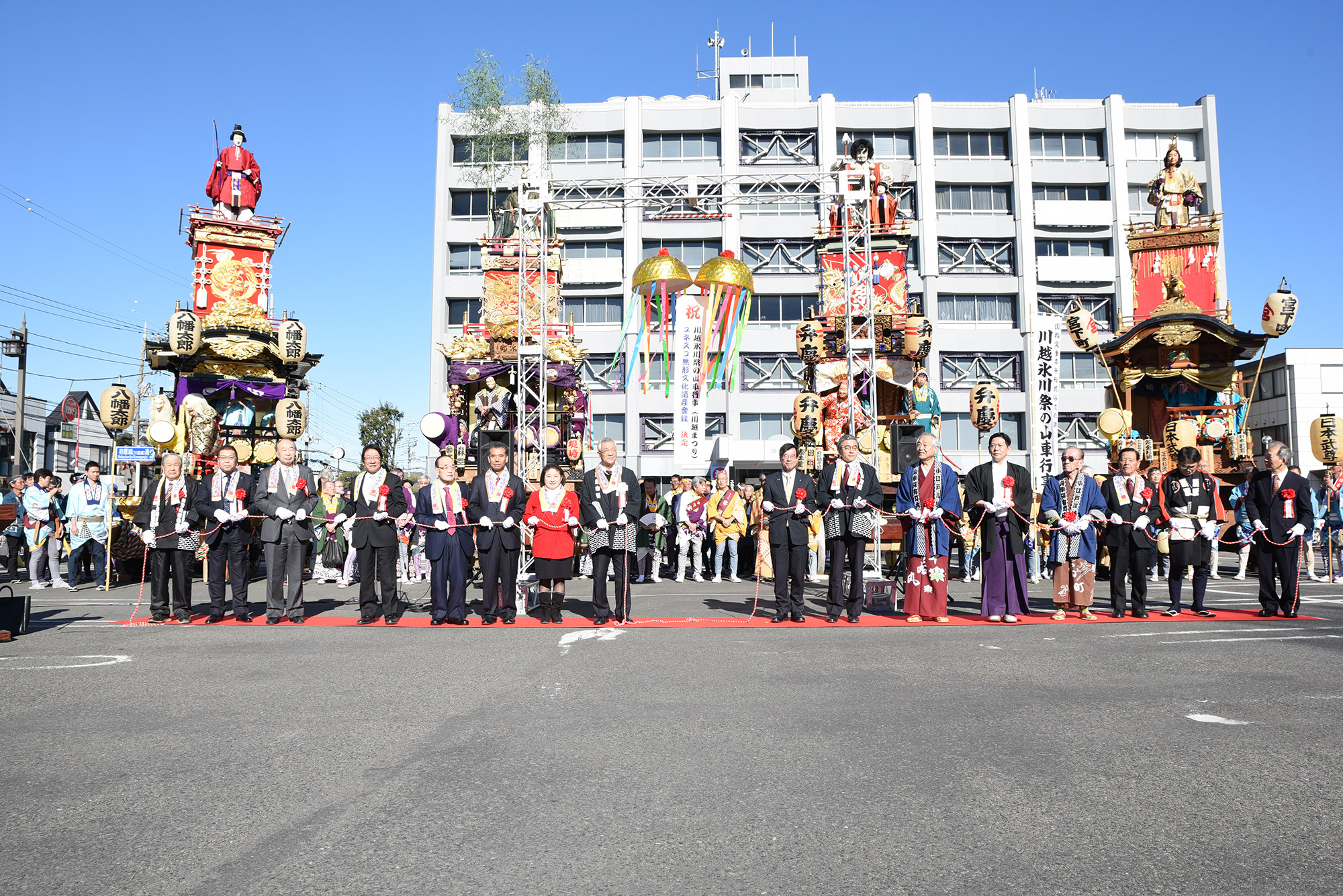
UNESCO
Intangible Cultural Heritage
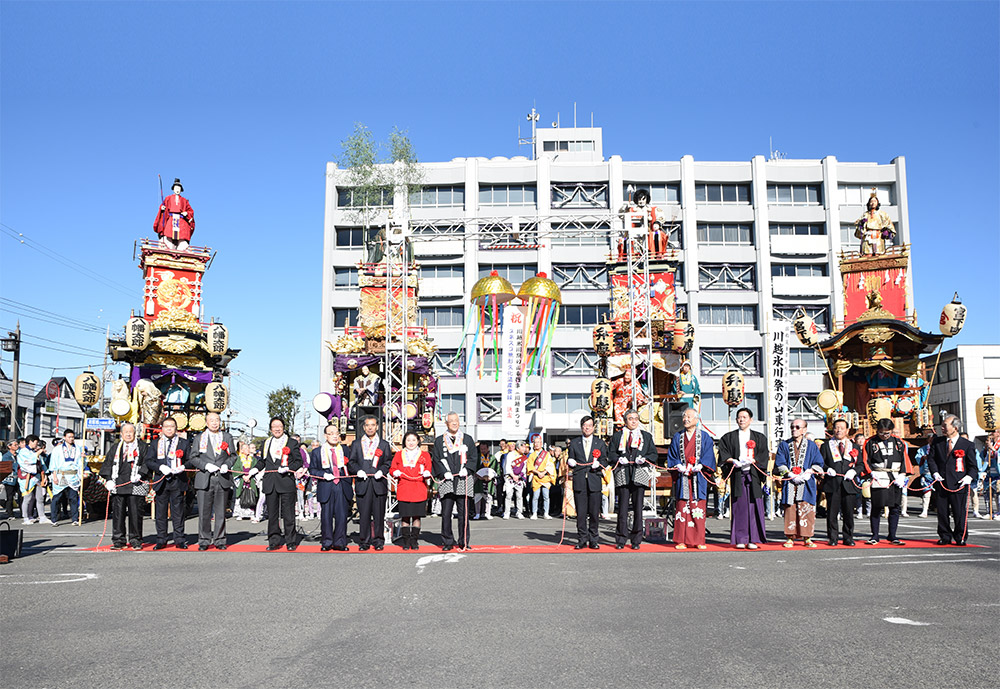
UNESCO
Intangible
Cultural Heritage
Heritage Nationally Designated Important Intangible Folk Cultural Properties
The Kawagoe Hikawa Festival
Nationally Designated Important
Intangible Folk Cultural Properties
The Kawagoe Hikawa Festival
Intangible Cultural Heritage
Intangible Cultural Heritage
The 11th Session of the UNESCO Intergovernmental Committee for the Safeguarding of the Intangible Cultural Heritage was held on November 30, 2016. In the session, it was decided that the “Yama, Hoko, Yatai, float festivals in Japan” will be included in “the Representative List of the Intangible Cultural Heritage of Humanity”. These festivals are held in order to pray to the gods for regional wellbeing and include processions of floats called "Yama", "Hoko" or "Yatai". “The Kawagoe Hikawa Festival is listed as one of the 33 representative examples of Yama, Hoko and Yatai float festivals in Japan. The 33 festivals are together designated by the Japanese government as an Important Intangible folk-cultural property.
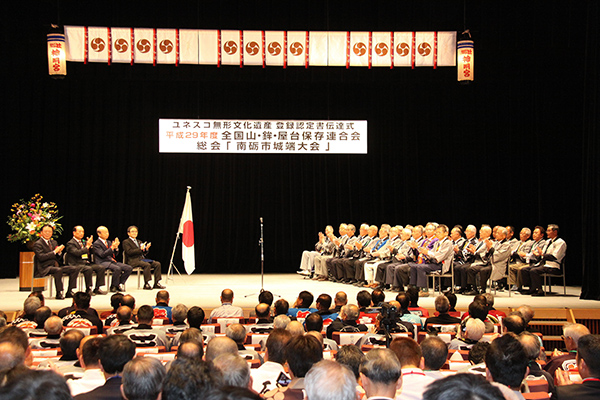
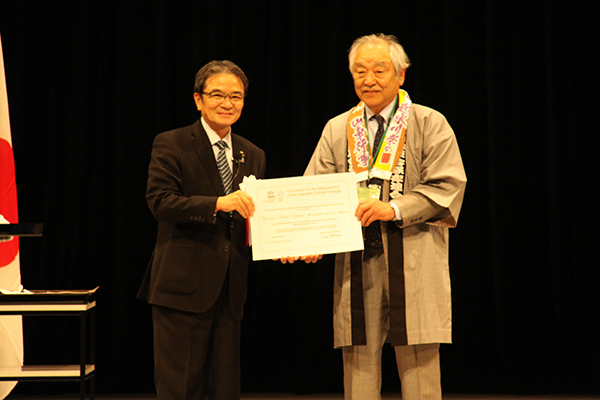
The 11th Session of the UNESCO Intergovernmental Committee for the Safeguarding of the Intangible Cultural Heritage was held on November 30, 2016. In the session, it was decided that the “Yama, Hoko, Yatai, float festivals in Japan” will be included in “the Representative List of the Intangible Cultural Heritage of Humanity”. These festivals are held in order to pray to the gods for regional wellbeing and include processions of floats called "Yama", "Hoko" or "Yatai". “The Kawagoe Hikawa Festival is listed as one of the 33 representative examples of Yama, Hoko and Yatai float festivals in Japan. The 33 festivals are together designated by the Japanese government as an Important Intangible folk-cultural property.


History


History
The history of the Kawagoe Hikawa Festival dates back to the middle of the 17th century. Nobutsuna Matsudaira, the then lord of Kawagoe, ordered the inauguration of a festival to help boost the local economy.
Nobutsuna also donated a "Mikoshi" (a portable shrine used to carry a divine spirit) to the Hikawa Shrine, which was located near to Kawagoe castle.
Being close to Edo (the old name for Tokyo), which was then the cultural center of Japan, Kawagoe adopted the festival style that was popular in Edo at the time. In the Kawagoe Hikawa Festival, the Mikoshi is paraded through the town followed by a procession of faithful townsfolk who pull festival floats called “Dashi”. The festival is held in October of every year.
The history of the Kawagoe Hikawa Festival dates back to the middle of the 17th century. Nobutsuna Matsudaira, the then lord of Kawagoe, ordered the inauguration of a festival to help boost the local economy. Nobutsuna also donated a "Mikoshi" (a portable shrine used to carry a divine spirit) to the Hikawa Shrine, which was located near to Kawagoe castle. Being close to Edo (the old name for Tokyo), which was then the cultural center of Japan, Kawagoe adopted the festival style that was popular in Edo at the time. In the Kawagoe Hikawa Festival, the Mikoshi is paraded through the town followed by a procession of faithful townsfolk who pull festival floats called “Dashi”. The festival is held in October of every year.
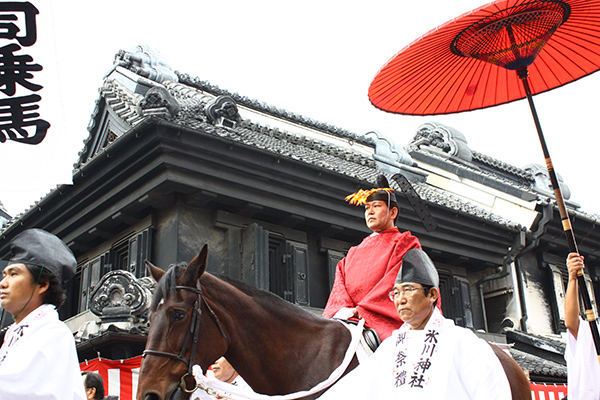
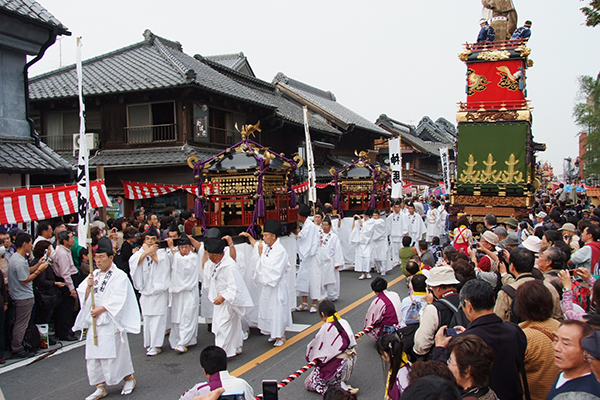


Dashi - The Festival Float
Dashi - The Festival Float
The present appearance of the Kawagoe “Dashi” (festival floats) was formed during the second half of the19th century.
Each float is equipped with wheels and it is moved by townsfolk pulling ropes together. The adjustable height of the Dashi enables it to pass overhead obstructions without trouble.
A doll themed after ancient legends and heroic stories is displayed at the top of each festival float.
The present appearance of the Kawagoe “Dashi” (festival floats) was formed during the second half of the19th century.
Each float is equipped with wheels and it is moved by townsfolk pulling ropes together. The adjustable height of the Dashi enables it to pass overhead obstructions without trouble.
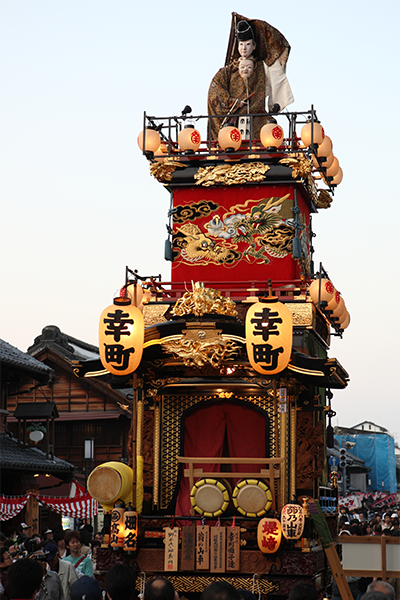
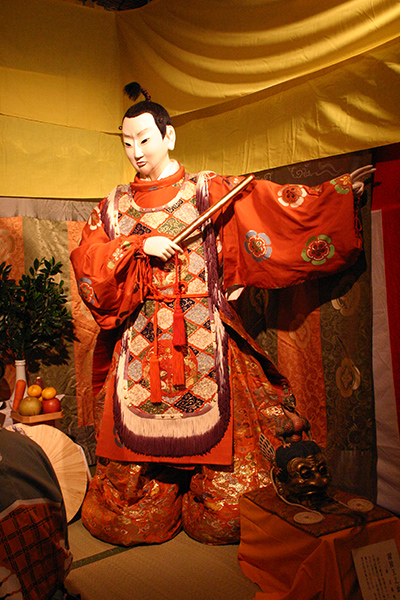
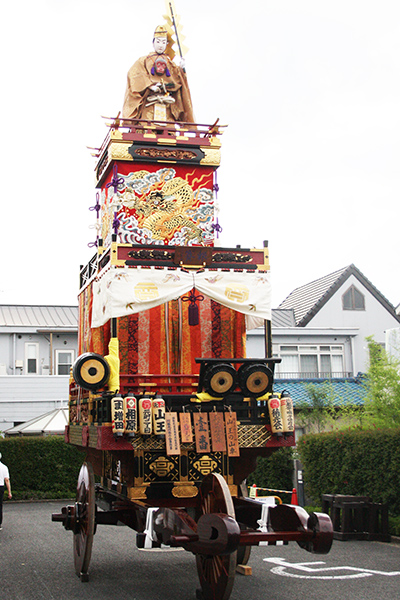



Organization and Tradition
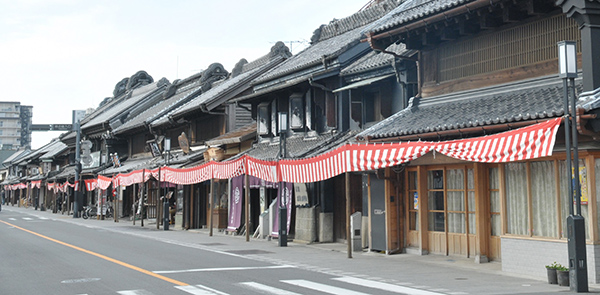

Organization and Tradition
Representative committees formed to support the festival are set up in each neighborhood of Kawagoe.These are in charge of preparing for the festival and tidying up the festival float of their neighborhood.
Each committee also establishes a “Kaisho” (festival headquarters), plans the route their Dashi will take, and hangs "Kou-Haku Maku" (red and white vertically striped curtains) along the festival float route roadsides.
On the day of the festival, all the people of a neighborhood wear the same costumes and team up in pulling their neighborhood float. Between festivals the secure storage of the festival float is also arranged by the committee. In this way, the townsfolk support festival traditions via an organizational system based on their neighborhood.
Representative committees formed to support the festival are set up in each neighborhood of Kawagoe.
These are in charge of preparing for the festival and tidying up the festival float of their neighborhood.
Each committee also establishes a “Kaisho” (festival headquarters), plans the route their Dashi will take, and hangs "Kou-Haku Maku" (red and white vertically striped curtains) along the festival float route roadsides.
On the day of the festival, all the people of a neighborhood wear the same costumes and team up in pulling their neighborhood float. Between festivals the secure storage of the festival float is also arranged by the committee. In this way, the townsfolk support festival traditions via an organizational system based on their neighborhood.
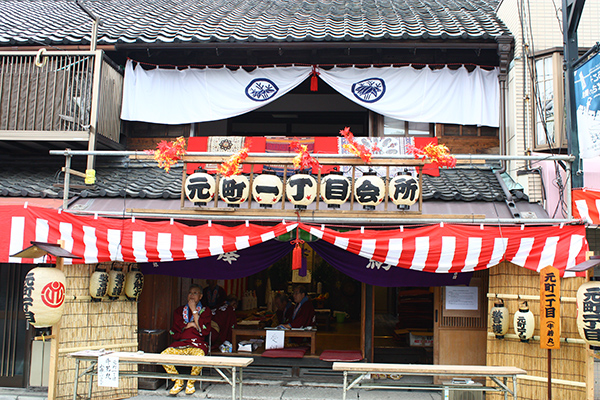
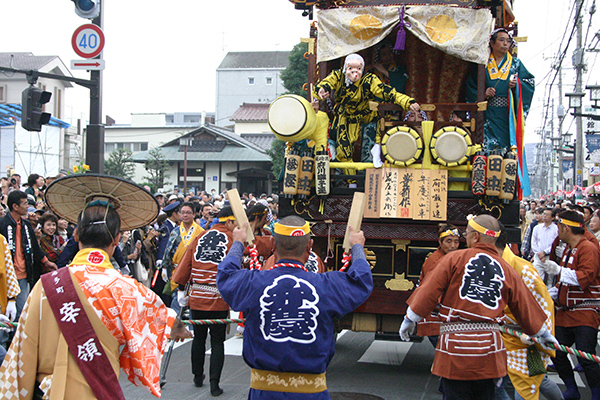


Matsuri-Bayashi
Matsuri-Bayashi
The Kawagoe festival float features a small stage where festive music played with Japanese flutes and drums accompanies performances by masked dancers. This music is called "Matsuri Bayashi". When two floats encounter each other during the festival procession, they stop and perform their Matsuri Bayashi music and dances.
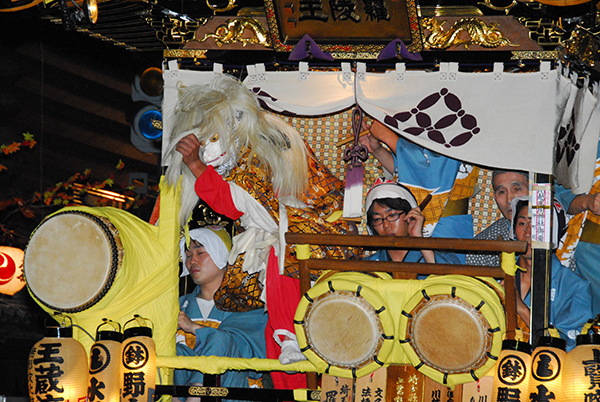
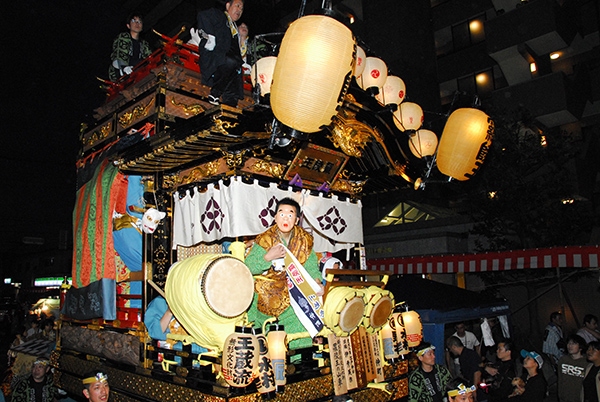
The Kawagoe festival float features a small stage where festive music played with Japanese flutes and drums accompanies performances by masked dancers. This music is called "Matsuri Bayashi". When two floats encounter each other during the festival procession, they stop and perform their Matsuri Bayashi music and dances.


Craftsmanship
Craftsmanship
Craftsmen carry out the assembly and disassembly of the festival float with the help of the townsfolk. During the festival, these craftsmen control every movement of the festival float. They climb up to the top of the float in order to clear any overhead obstructions and also stay close to the wheels so that the float may be turned safely and smoothly. When they start to move the float at the beginning of the festival and when the festival ends these craftsmen sing a song called "Kiyari".
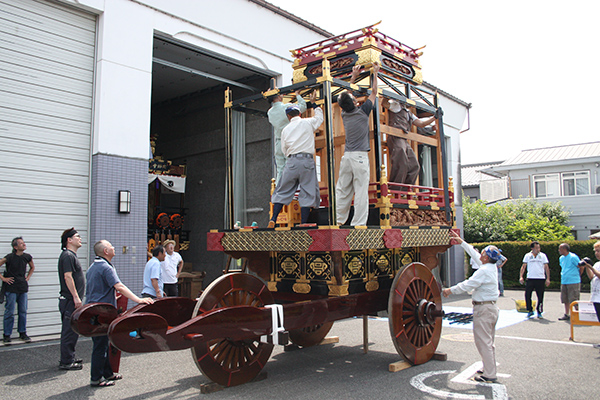
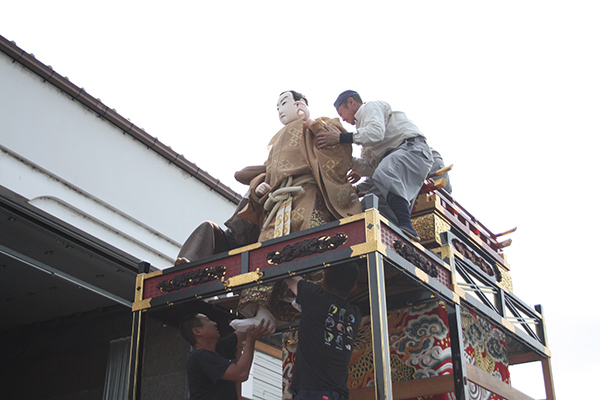
Craftsmen carry out the assembly and disassembly of the festival float with the help of the townsfolk. During the festival, these craftsmen control every movement of the festival float. They climb up to the top of the float in order to clear any overhead obstructions and also stay close to the wheels so that the float may be turned safely and smoothly. When they start to move the float at the beginning of the festival and when the festival ends these craftsmen sing a song called "Kiyari".


Kawagoe Hikawa Shrine
Kawagoe Hikawa Shrine
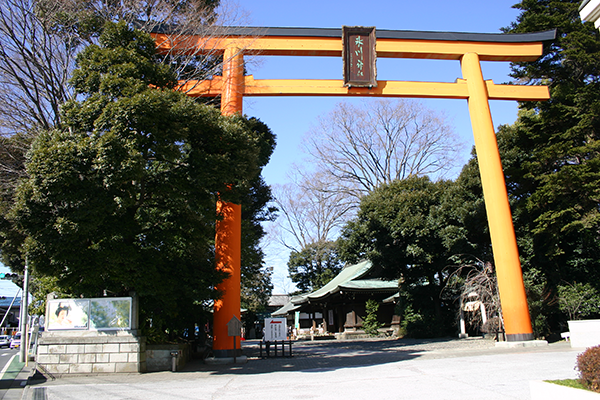

Since ancient times, Kawagoe Hikawa Shrine has been known by the honorific “O-hikawa sama” and highly revered as the familiar protective patron spirit of Kawagoe.
Founded 1,500 years ago in the time of the emperor Kinmei, it is said to have begun by being enshrined and separated from the Hikawa Shrine in Omiya by the governor of Musashi Province.
In the first year of the Chōroku era (1457) of the Muromachi period, Ōta Dōkan, who was constructing Kawagoe Castle, highly venerated the shrine and presented it with a number of Japanese waka poems. Furthermore, in the “Kawagoe Annals”, which depicts a battle held in the sixth year of the Tenbun era (1537) of the Sengoku period, it was recorded how at that time the shrine was also a popular place of pilgrimage.
Construction of the hip-and-gable roofed main shrine was started in the thirteenth year of the Tenpō era (1842) and finished in the second year of the Kaei era (1849). The carvings were crafted by a master craftsman of the day, Shimamura Genzō, and over fifty types of raised-pattern style “jibori” carvings were made. Filled with elaborate pieces, the shrine is characterised in particular by carvings of waves influenced by Hiroshige of the ukiyo-e art genre and carvings from Hikawa Festival floats.
In this way, in 1956 Kawagoe Hikawa Shrine was designated as a Saitama Prefectural Cultural Property for being a shrine construction representative of the late Edo period.
In recent years, the shrine has been popular with young people in particular as a deity of marriage and a love “power spot”.
Since ancient times, Kawagoe Hikawa Shrine has been known by the honorific “O-hikawa sama” and highly revered as the familiar protective patron spirit of Kawagoe.
Founded 1,500 years ago in the time of the emperor Kinmei, it is said to have begun by being enshrined and separated from the Hikawa Shrine in Omiya by the governor of Musashi Province.
In the first year of the Chōroku era (1457) of the Muromachi period, Ōta Dōkan, who was constructing Kawagoe Castle, highly venerated the shrine and presented it with a number of Japanese waka poems. Furthermore, in the “Kawagoe Annals”, which depicts a battle held in the sixth year of the Tenbun era (1537) of the Sengoku period, it was recorded how at that time the shrine was also a popular place of pilgrimage.
Construction of the hip-and-gable roofed main shrine was started in the thirteenth year of the Tenpō era (1842) and finished in the second year of the Kaei era (1849). The carvings were crafted by a master craftsman of the day, Shimamura Genzō, and over fifty types of raised-pattern style “jibori” carvings were made. Filled with elaborate pieces, the shrine is characterised in particular by carvings of waves influenced by Hiroshige of the ukiyo-e art genre and carvings from Hikawa Festival floats.
In this way, in 1956 Kawagoe Hikawa Shrine was designated as a Saitama Prefectural Cultural Property for being a shrine construction representative of the late Edo period.
In recent years, the shrine has been popular with young people in particular as a deity of marriage and a love “power spot”.
Kawagoe Hikawa Shrine Rituals
The rituals of Kawagoe Hikawa Shrine are composed of the Shinto religious services of the Reitaisai Festival, held on October 14 each year for the founding of the shrine, and the Jinkosai Festival held directly afterwards.
Kawagoe Hikawa Shrine Rituals
The rituals of Kawagoe Hikawa Shrine are composed of the Shinto religious services of the Reitaisai Festival, held on October 14 each year for the founding of the shrine, and the Jinkosai Festival held directly afterwards.
Reitaisai Festival
The Reitaisai is a Shinto service held every fall since the founding of the Kawagoe Hikawa Shrine to express gratitude to the deity, Hikawa-no-Okami, and pray for the good health of worshipers.
Reitaisai Festival
The Reitaisai is a Shinto service held every fall since the founding of the Kawagoe Hikawa Shrine to express gratitude to the deity, Hikawa-no-Okami, and pray for the good health of worshipers.
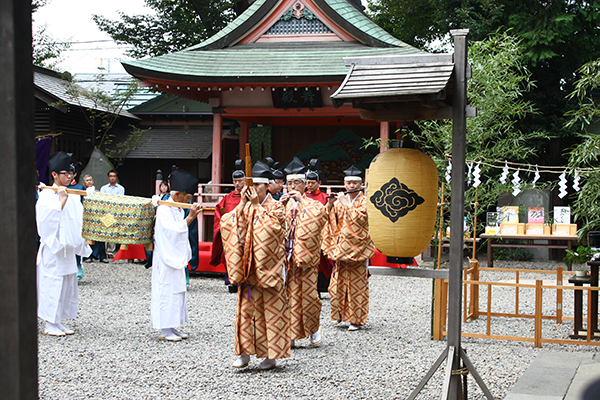
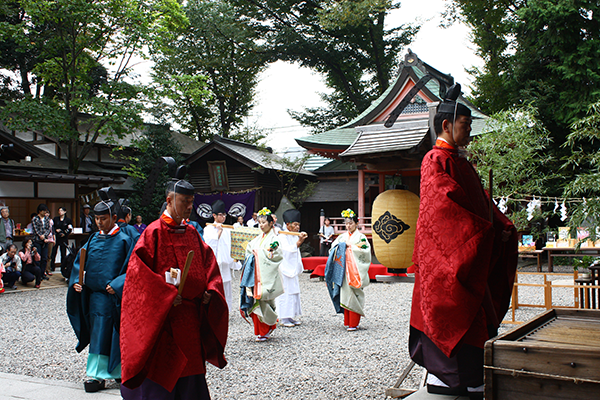


Jinkosai Festival
During the Jinkosai Festival, the deity of Hikawa is mounted onto a portable shrine and paraded around the neighbourhoods near Kawagoe Castle, the people receiving the divine virtues of the deity. It is a traditional ritual to pray for the happiness and prosperity of the town and also the heart and soul of the Kawagoe Hikawa Festival. A highlight of the festival is the scene of the floats welcoming and accompany the shrine. Together with being reminiscent of the processions of the Edo Tenka Festival, it is a solemn and sacred ritual that also resembles the processions depicted in the “Kawagoe Hikawa Festival Picture Scroll” created in 1826.
Jinkosai Festival
During the Jinkosai Festival, the deity of Hikawa is mounted onto a portable shrine and paraded around the neighbourhoods near Kawagoe Castle, the people receiving the divine virtues of the deity. It is a traditional ritual to pray for the happiness and prosperity of the town and also the heart and soul of the Kawagoe Hikawa Festival. A highlight of the festival is the scene of the floats welcoming and accompany the shrine. Together with being reminiscent of the processions of the Edo Tenka Festival, it is a solemn and sacred ritual that also resembles the processions depicted in the “Kawagoe Hikawa Festival Picture Scroll” created in 1826.





 About/History
About/History